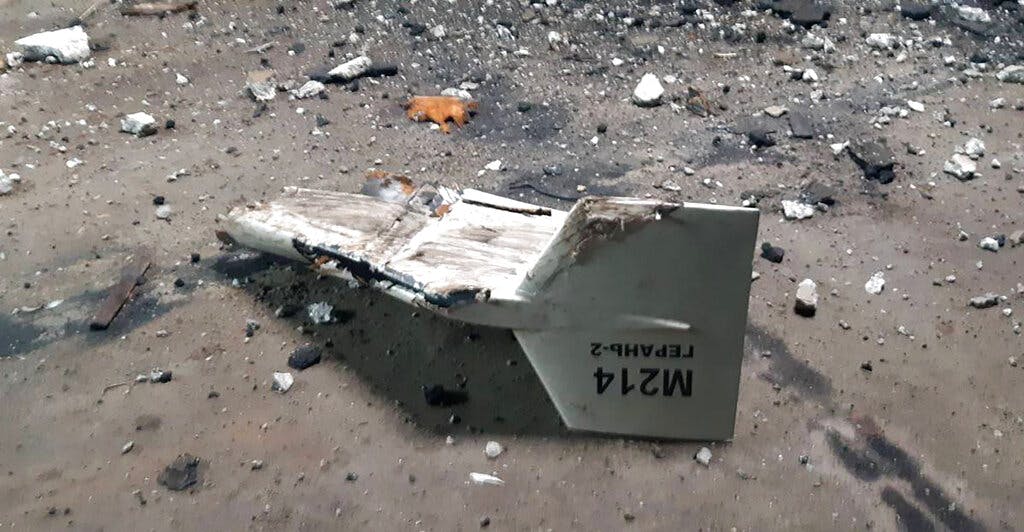Does Russia’s Use of Iranian Drones in Ukraine Threaten To Widen the War?
While under widespread attack, Ukraine throws down the gauntlet, at least diplomatically, at the United Nations.

In the currency of global conflict, there are at least three sides to every coin. The latest example is the war in Ukraine, into which the Islamic Republic of Iran has squarely inserted itself by supplying lethal drones to the aggressor, Moscow.
The development, coupled with the toxic gusto with which the Kremlin is unleashing the kamikaze drones, so called because they dive into their targets with their explosive payloads, stretches the geographic contours of this European calamity and will ensure fresh headaches not just for Kyiv but for the NATO alliance, a staunch supporter.
The Shahed 135 loitering drones are made by Iranian Aircraft Industrial Company and the ones striking Ukraine are based principally at a military site in the Russian-occupied Crimean peninsula. The New York Times reported that Iran has already dispatched to Crimea trainers from the Islamic Revolutionary Guards Corps, a branch of Iran’s military that Washington designates as a terrorist organization, to address technical issues with the drones.
It is by now widely known that the drones can fly hundreds of miles and are launched in clusters of five to 10, with the aim of making it more difficult for Ukraine’s stretched air defenses to shoot them down. Each drone “warhead” packs high-explosive material that weighs around 100 pounds.
Drone strikes resulted in the deaths of four people at Kyiv earlier this week. Moscow is also using the devices to strike infrastructure targets such as power plants, leading to widespread blackouts. Overnight on Wednesday, Russian forces attacked Mykolaiv with a barrage of drones, of which 14 were shot down by Ukrainian forces. Ukraine’s Southern Air Command did not specify the total number of drones that comprised the attack.
Russia’s increasing reliance on drones to terrorize the civilian population of Ukraine is due in part to its mounting military failures on the front lines, even in territories that it has illegally annexed, and where Vladimir Putin declared martial law yesterday. Yet they also represent savings, of a kind: That is because the drones are estimated to cost less than $20,000 per unit. According to a recent report in the Telegraph, that is “a fraction of the cost of conventional Russian missiles, which range from about $300,000 for a Tochka-U up to $13 million for an x-101 cruise missile.”
As the Associated Press also reported, Ukraine’s Western-reinforced air defenses have made it difficult for Russian warplanes to operate, and killer drones are a relatively inexpensive and effective weapon to seek out and destroy targets while spreading fear among troops and civilians.
While under widespread attack on Wednesday, Ukraine threw down the gauntlet, at least diplomatically, at the United Nations. The AP reported that Ukraine accused Iran of violating a UN Security Council ban on the transfer of drones capable of flying 300 kilometers, and invited UN experts to inspect what it asserts were Iranian-origin drones being used by Russia against civilian targets. The French ambassador to the UN, Nicolas De Riviere, said after a council meeting that the drones were delivered to Russia from Iran and are being used in Ukraine in violation of the resolution, allegations predictably rejected by Moscow and Tehran.
A state department spokesman, Vedant Patel, told reporters in Washington that “as we have seen over the course of the past months there is ample evidence that Russia is using UAVs from Iran in cruel and deliberate attacks against the people of Ukraine, including against civilians and critical civilian infrastructure.”
In a statement, the Britain’s ministry of defense said that “Russia’s defense industry is probably incapable of producing advanced munitions at the rate they are being expended.” That development may be what is paving the way for what according to multiple reports is the possibility of Tehran’s sending long-range Fateh-110 and Zolfaghar missiles to replenish Moscow’s diminishing arsenals. While those ballistic missiles do not pack the destruction of high-precision cruise missiles and need to be fired from vehicles, they still have ranges of about 200 miles and 400 miles, respectively.
That unsettling prospect could also up the ante for Israel, which for security reasons of its own has a complex relationship with Russia but has heard increasing calls to help arm Ukraine. While Israel’s much-vaunted Iron Dome anti-rocket system would not be particularly effective against Russian ballistic missiles over an area as large as Ukraine, they could help deflect other weapons such as Iranian kamikaze drones.
While the drones themselves are not large, through their increased use and ugly provenance they are already enlarging the scale of the fight in Europe. The British defense secretary, Ben Wallace, flew to Washington for hastily scheduled meetings this week with his counterparts at the Pentagon and White House. According to British reports, a major topic of discussion was the provision of ramped up security assistance to Ukraine as it faces more mayhem from the skies, brought to them by Moscow and its far-flung friends.

